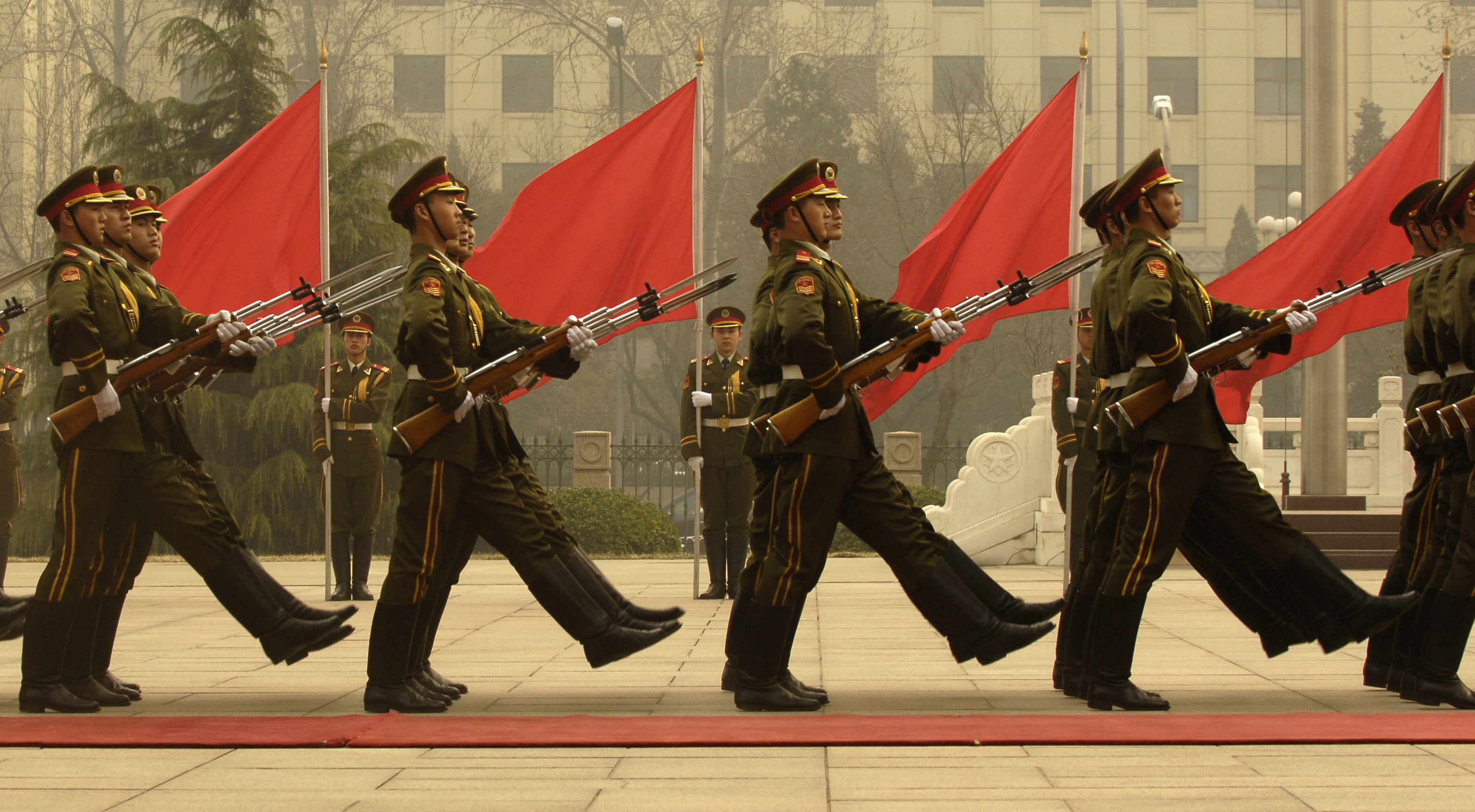
A new Chinese defense ministry policy paper counters the Pentagon’s National Defense Strategy by casting the U.S. as an aggressive and destabilizing force in Asia.
The recently released China’s National Defense in the New Era acknowledges China and the U.S. are competing superpowers, but China’s paper makes the case Beijing’s policies provide peaceful security to a region facing threats posed by pressure from the U.S.
“International strategic competition is on the rise. The U.S. has adjusted its national security and defense strategies, and adopted unilateral policies. It has provoked and intensified competition among major countries, significantly increased its defense expenditure, pushed for additional capacity in nuclear, outer space, cyber and missile defense, and undermined global strategic stability,” the white paper states.
The white paper cites the following examples as U.S. policies that Beijing’s leaders consider aggressive:
- The U.S. arms sales to Taiwan, which China considers a threat to its stated policy of peaceful reunification. China has not renounced the possible use of force to reunify Taiwan with the mainland.
- Sending U.S. Navy and Coast Guard ships into waters China claims as part of its sovereign territory. In some cases, international law does not support China’s claims to islands passed by U.S. ships. In other cases, the international policy for transiting waterways does include the same requirements China requests such as seeking permission before transiting the Strait of Taiwan.
- The deployment of the U.S.-built Terminal High Altitude Area Defense (THAAD) ballistic missile defense system to the Republic of Korea.
- An alliance with Australia that continues to strengthen and engage in Asia-Pacific security affairs
- U.S. defense spending that is described as outpacing what China spends on defense, though the white paper includes neither detailed information about actual defense spending rates nor a full reporting of Chinese defense spending levels.
Even with the rhetoric showcasing China’s defense activities as positive actions, what sets this white paper apart from past policy documents issued by Beijing’s leadership is that, this time, the Chinese “at least touch upon virtually every aspect of China’s actual military development that is highlighted in the U.S. reports on Chinese Military Power,” writes Anthony Cordesman, the Arleigh Burke chair in strategy at the Center for Strategic and International Studies, in his recent report briefly analyzing China’s white paper.
“The white paper’s long section on ‘Reform in China’s National Defense and Armed Forces’ may go far beyond the one-page attention span of some U.S. decision-makers, but it should be compulsory reading for anyone who is seriously interested in China’s evolving capabilities and any real-world aspect of U.S. defense policy,” Cordesman writes.
Beijing’s leadership warns the growing strategic rivalry between the existing superpower, the U.S., and the emerging Chinese superpower is already strong and will shape the relationship between the two nations for decades, Cordesman told USNI News during a telephone interview on Tuesday.
While the U.S. should respond to China’s white paper – through strengthening its level of deterrence, strategic partnerships and seeking ways to cooperate with China – for more than a decade the U.S. has not had a coordinated Asia strategy, he said.
“You have to have a consistent strategic posture, and you have to have a clear plan that shows your allies your forces are going to stay and what their capabilities are going to be,” Cordesman told USNI News. “But above all, you have to have a relationship with strategic partners that is based on partnership and not burden-sharing.”
Performing regular freedom of navigation operations past contested islands in the South China Sea is not a strategy, he said. The Department of State and other U.S. agencies need to be part of the strategy because, for the most part, China’s competition for influence in the region is economic, not military.
“You need some kind of stable economic strategy,” Cordesman said about what he thinks U.S. policymakers should be doing. “Instead, we have essentially a set of somewhat open-ended trade wars where it’s not quite clear who we’re having the trade war with.”
The lack of discussion among agencies about developing an Asia policy concerns Cordesman. Among lower-level policymakers and planners at the Pentagon, and among armed services committee members on Capitol Hill, he said there is a recognition of needing a more coordinated whole of government policy. So far, he hasn’t seen a coordinated plan emerge.
“For many years, for a long time we could coast on the momentum of the Cold War, particularly when you did not have Russia reasserting itself and China was still early in its emergence,” Cordesman said. “But none of that is really going to take us into the next decade.”





